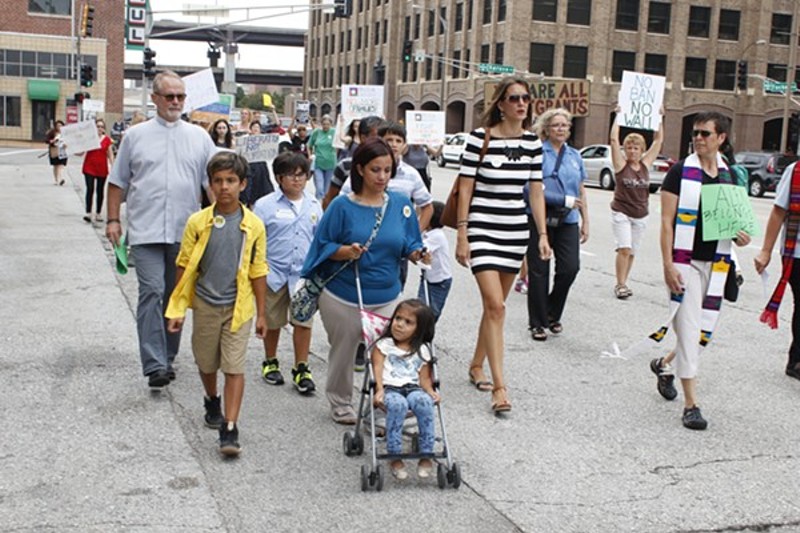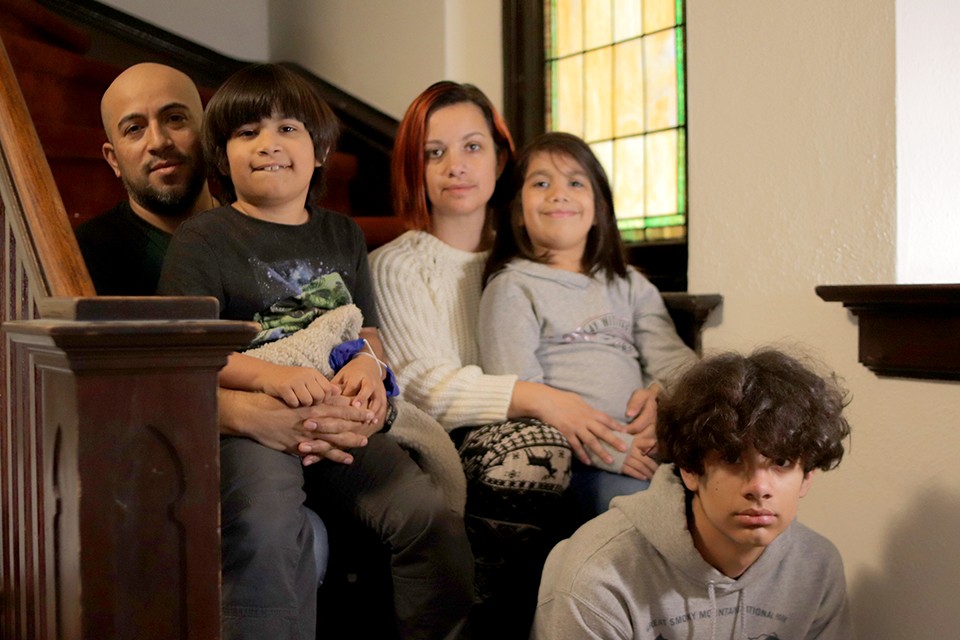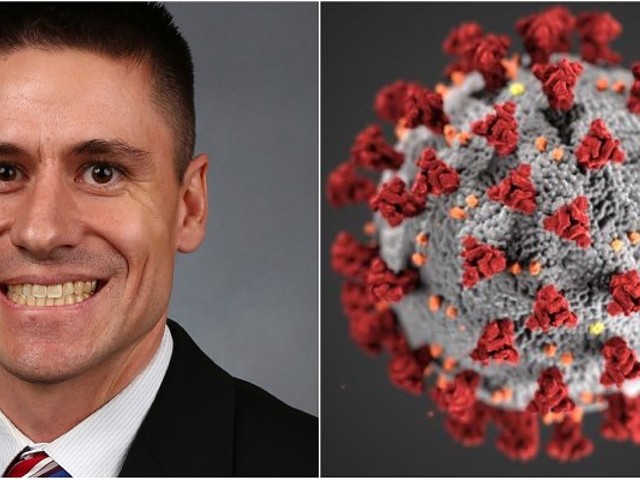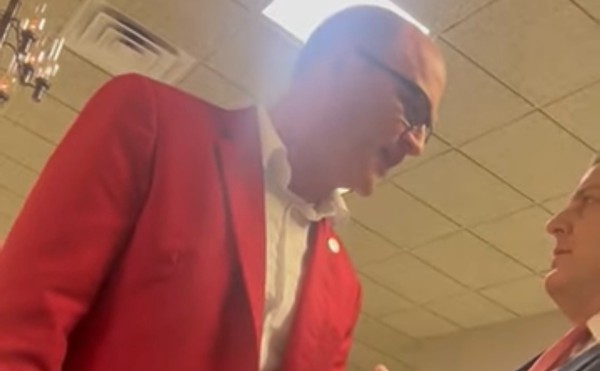At some point during the Trump presidency, it became clear that there would be no mercy for Alex Garcia.
The construction worker fled his Poplar Bluff home in September 2017 at age 36 and took refuge in a Maplewood church. A married father and stepfather of five children, Garcia had been told the summer of Trump's first year in office to surrender to U.S. Immigration and Customs Enforcement so the agency could deport him to Honduras. Instead, he sought sanctuary in the basement of Christ Church.
It was a desperate move, not to mention one that could fail if federal agents decided to scrap their longstanding practice of not pulling people out of churches. But Garcia hoped to buy a little time to work out a new agreement with the government. Under the Obama administration, ICE had twice granted him temporary permission to stay in the United States.
Ideally, Garcia thought, he would return to Poplar Bluff before the year was out. But that's not the way it played out.
From Trump's first days in office, the new president and hardline advisers worked to make the United States a hostile place for those who weren't born here. They all but sawed off the pipeline for asylum seekers, fought to gut the popular DREAM Act, refined a Muslim ban over and over in hopes of dragging it just over the legal threshold, and yanked children — even babies — away from their parents at the border, locking them in cages to discourage further immigration.
"The deep cruelty of the Trump administration and their entrenched pride in being hardline was apparent early on," says Nicole Cortés, an immigration attorney and co-director of the Migrant and Immigrant Community Action Project.
In St. Louis, the effects were widespread, hitting universities' international students and faculty, setting Dreamers adrift and shaping the face of the city through the omission of thousands of refugees and immigrants who were blocked from legal entry.
Garcia and his family were among the first wave of people to have their lives upended by Trump's policies, and they could be among the first to benefit from changes that President-elect Joe Biden is expected to make after he takes office Wednesday. But after four years of local immigrants, refugees and their advocates fighting to survive under the previous administration, it's unclear when and to what extent Biden and a new Democrat-majority Congress will reshape the country's immigration system.
"Biden is not going to come in and wave his magic wand and everything is going to be perfect," Garcia's wife Carly says. "It's going to take the American people to fix this."
Advocates know immigration concerns will be competing for a spot among an overload of issues facing the new administration, including triaging the United States' botched pandemic response and shoring up a flailing economy.
"While immigration is important to the new administration, it hasn't really been announced as one of the four or five top priorities," says Anna Crosslin, president and CEO of the International Institute of St. Louis, adding that she doesn't expect any changes that require congressional approval to occur anytime soon as a result.
Sara John, executive director of the St. Louis Inter-Faith Committee on Latin America, says Biden needs to go beyond just undoing Trump's damage. She and other advocates fought a lot of the Obama-era immigration policies, and she worries that the firehose blast of terrible rules during the Trump years has so changed the landscape that allies will grow complacent simply with a return to what had been considered normal.
"That's a really dangerous space for allies to be in," says John, who along with Cortés has worked relentlessly on Garcia's case only to see one door after another slammed — literally, at times — in their faces.
"I'm cautiously optimistic 2021 will be different," she says.
Cortés agrees. Both women are thrilled to see Trump leave but know there is a lot of work ahead.
"At least now," Cortés says, "it's not just deaf ears."
Donald Trump left the presidency like an angry ex-husband forced to sell the house in a divorce. He and his minions ransacked government programs, punching holes in the walls of critical agencies, selling our democracy for parts and busting the pipes of the infrastructure needed to continue basic bureaucratic functions.
The point was not only to change the way the country operates, but also to jam up the works so that the Biden administration would have to spend all its time trying to mend the damage.
The apparatus of the U.S. refugee resettlement program is just one victim of Trump's vengeance approach to governing.
"They didn't just close things, they didn't just change them, but wherever possible, they actually tried to dismantle or ensure that they could not be restarted easily," Crosslin, of the International Institute of St. Louis, explains.
In 2016, IISTL and other refugee resettlement agencies across the United States had begun accepting Syrians who were fleeing civil war.
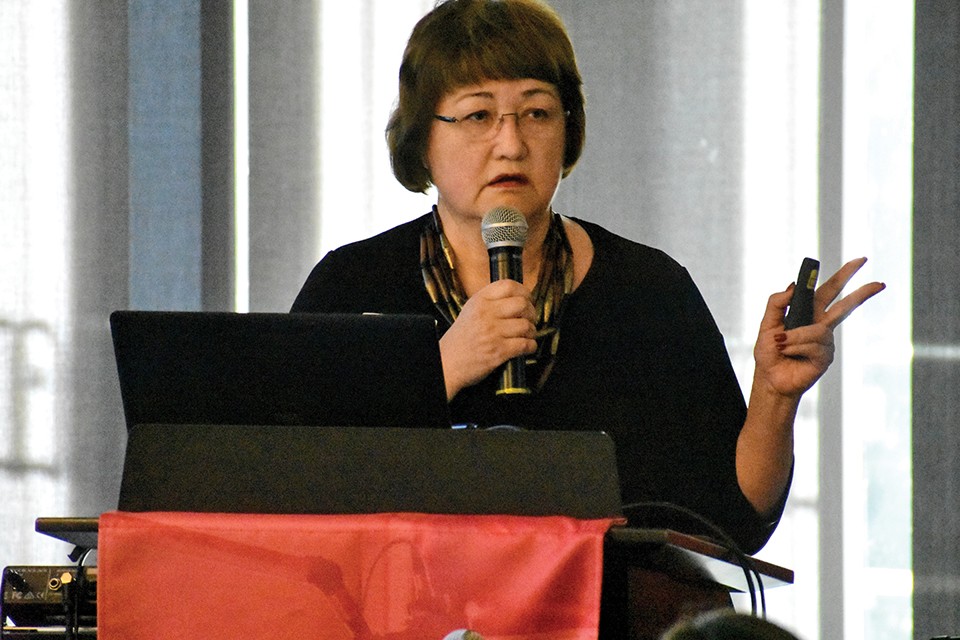
"That came to a grinding halt in 2017 with the president's Muslim ban," Crosslin says.
The ban, which targeted seven largely Muslim countries, suspended the entry of Syrians indefinitely, ostensibly to guard against terrorism. St. Louis has a long history of absorbing people escaping conflicts across the world. It famously adopted tens of thousands of Bosnians in the 1990s and 2000s and large numbers of Vietnamese in the 1980s. And while the arrival of newcomers has always sparked a certain amount of suspicion and bigotry in the early going, that history of offering a safe harbor has become a local point of pride as refugees and their families have fused to the metropolitan region's core.
The number of refugees allowed into the United States each year can vary wildly, depending on what is happening in the world and the need. The president sets the annual cap, and the U.S. had for years led the world in welcoming people fleeing starvation, war and persecution. That changed under Trump.
Spurred by ruthless anti-immigrant, anti-refugee advisers Steve Bannon and Stephen Miller, Trump's administration immediately began slashing the slots available and turning away desperate people, including those who had risked their lives to support U.S. troops in conflicts overseas.
"I would be happy if not a single refugee foot ever again touched America's soil," Miller told former Trump aide Cliff Sims at one point, according to Sims' tell-all book Team of Vipers.
In the 2016 fiscal year (October 1, 2015, to September 30, 2016), the U.S. admitted nearly 85,000 refugees. The outgoing Obama administration set the maximum at 110,000 for the following year, but Trump's Muslim ban included a revised cap of just 50,000.
In his first full year in office, the new president officially lowered it to 45,000. But policy changes were already making it much harder for people who would have typically been approved to enter, and only about 22,500 were ultimately allowed in.
Each year, Trump shrunk the cap, decreasing it to its current maximum of 15,000, a new all-time low. Biden has pledged to increase the numbers to 125,000, but it could take years to rebuild the operations needed to reach those levels. In a call with reporters, a transition official said it was "too early" to say whether they would reach the goal in 2021 because "it depends on the state of the infrastructure, which is something we're determining," CNN reported last month.
As the United States slammed the gates on refugees, it lost staff and resources in foreign countries where the initial application process begins. Rebuilding that will take time, and the full extent of the backlog of applicants is not clear. The application process would normally take two or three years. Even if the Biden administration starts working through applications on its first day in office, the timeline for bringing people here will be lagged. Gutting of the federal programs also had the trickle-down effect of cutting into resettlement agencies located around the United States. Without the supply of refugees, organizations cut back on staff. Some closed.
The International Institute of St. Louis, which offers a variety of immigrant services beyond refugee resettlement, fared better than many thanks to a young core of committed staff and community support for its work, Crosslin says. It still had to reduce staff by about 20 percent.
In 2016, IISTL resettled 1,158 refugees. In 2020, that number was 232. Crosslin estimates that the institute would have resettled another 4,000 refugees in St. Louis during the Trump presidency had it not been for the administration's harsh policies. Multiply those numbers by all the agencies scattered across the country, and the larger picture starts to come into view. Now include the family members and friends that tend to follow the new residents to town.
The experiences and destinies of those who, often fleeing for their lives, never made it here weigh on Crosslin.
"It wasn't just St. Louis," she says. "There were 20 to 25 cities that had launched Syrian resettlement programs. It is a tragedy for the individuals, especially. It isn't just about St. Louis losing out on an opportunity, but the individuals, those 4,000 people who didn't make it to St. Louis in the last four years. What happened to them? If they're alive, how destitute are they right now? Are they the ones we see the pictures of — winter in the refugee camps in Syria and kids in sandals? They probably are.
"That's the tragedy to all this: that we could have helped 4,000 people and probably saved a fair number of lives while we were at it."
Those who were counting the days until Joe Biden and Kamala Harris took office now divide their post-Trump dreams into goals that could be accomplished quickly and those that will take more time.
On the short-term list is undoing the policies Trump created simply by issuing an executive order or reinterpreting existing laws in the harshest light possible. Fortunately for advocates and allies of immigrants and refugees, those orders account for the majority of Trump's most objectionable policies. The Muslim ban was introduced through an executive order. The move to cage children who crossed the U.S. border with their families was an enforcement decision, as were the directions to amp up deportations even hundreds of miles north.
Alex Garcia's situation is an illustration of both the immediate consequences of Trump and gridlock on immigration reform that goes back decades.
"I think we're fighting on multiple fronts," says Cortés, with the Migrant and Immigrant Community Action Project.
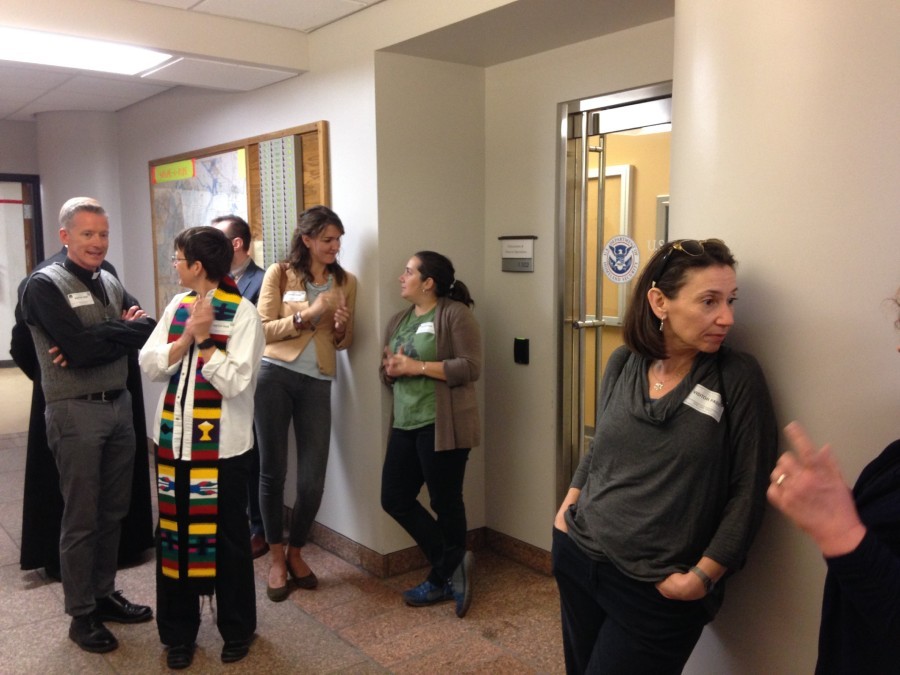
It was Trump, through an executive order, who led to Garcia receiving a letter three and a half years ago with orders to surrender for deportation. If not for Trump, it's likely Garcia would have been granted permission to stay another year and continue his life until the next renewal. But it was the unforgiving immigration laws that left him vulnerable to the whims of an anti-immigrant president, and those have been decades in the making.
Half his lifetime ago, when Garcia was a teen, he was deported after a failed attempt to cross the border. He was later able to slip across and boarded a train to Poplar Bluff. But that old deportation order remains active today, nearly two decades later. It doesn't matter that his wife Carly is a U.S.-born citizen or that his children are also citizens. It doesn't matter that he and his family paid their taxes, worked, made friends and became respected members of their community. It doesn't even matter that Garcia tried, through an attorney, to obtain citizenship.
The existing laws provide no path for him to clear up that aging misdemeanor without leaving the country. His only option would be to return to Honduras and wait ten years to begin the citizenship process again. With kids who've never lived anywhere besides Missouri, much less in a violence-stricken country like Honduras, Garcia and Carly see that as no option at all.
Immigration attorney Jim Hacking says the U.S. has been stuck in a long-running congressional impasse on immigration reform. The last major changes to the Immigration and Nationality Act occurred nearly a quarter-century ago, in 1996.
As a result, the St. Louis-based attorney explains, "we've had this pendulum swinging from president to president." Each new administration interprets the laws as it wishes.
Now, with Biden taking office, the pendulum is expected to swing again. How far is an open question.
Trump's executive orders are one thing, and Hacking is anticipating that the new administration will file countermeasures almost immediately. "You'll see this flurry of executive orders," he predicts. The bigger unknowns are how long it will take to change practices and whether Biden and a new Congress will move beyond just cleaning up Trump's mess — not that there isn't plenty of work to do on that front alone.
Trump, Hacking notes, installed people who had been on the far-right fringe to run federal agencies. Even when they're gone, it will be difficult to scrub away their fingerprints. As examples, Hacking points to the difficulties international students had in obtaining permission to study here as well as changes to the criteria for people to sponsor family members to join them in the U.S. Under Obama, the spouses of longtime visa holders were allowed to get jobs in the United States.
"Trump came in and said, 'Nope, we're not doing that anymore,' and that just cuts the families' income in half," Hacking says. "It's been little things, like 'What else can we do? Where else can we stick that knife in a little further?'"
In September 2017, Carly Garcia and her children marched with supporters in downtown St. Louis. She pushed her youngest, just three years old at the time, in a stroller. Cortés, with the MICA Project, and Sara John of the St. Louis Inter-Faith Committee on Latin America, or IFCLA, walked at her side.
"He deserves to be with his five children," Carly said of her husband. "What they are doing to families like ours is not right. We are good people, and he wants to be with us."
It was her first day of what has become a long and frustrating journey, stepping out in front of reporters and demanding justice from unmoved immigration officials, all while her husband is forced to hide out in a church to avoid being snatched away by federal agents.
In the years since, the family had to give up their home in Poplar Bluff. After living with her parents for a time, Carly and three of the kids moved to Maplewood to be closer to Christ Church, where Alex Garcia has been living in a basement hall converted to an apartment. Much has changed. She now works for IFCLA and has become a fierce advocate on immigration issues, not only for her husband but for wider reform. The kids are growing up. The daughter she pushed in the stroller during that first march in 2017 is now six. Her oldest has his driver's permit.
But Alex Garcia is still there in that basement.
"Although mine and the kids' life has continued," Carly says, "his life has literally been on hold for the past three years."
She says it breaks her heart to see her husband, a man who was always proud to support his family, forced to rely on the help of others. In an interview on Zoom, she and Garcia are polite but somber. They are grateful for all the support they have received in St. Louis, so much so that if Garcia is granted another stay of deportation, they plan to remain in the metro and continue to fight for others. The long-term goal is persuade Congress to change laws and create a path to citizenship for Garcia and others stuck in the web of U.S. immigration laws. But even if that happens, it will have come at a price. Garcia will have been in sanctuary 1,214 days by the time Trump exits office this week.
Asked if he would now make the same decision he did in 2017 had he known he would still be living in a basement more than three years later, Garcia pauses for a long while.
"I say I think it will be worth it," he says finally. "My hope is still there."
To keep himself busy, he has painted much of the church's interior by now and scoured the building for broken things to fix, small improvements to make. Asked what he would do the first day, if he is allowed to walk free in the world again, it seems like too big of a question. The past three-plus years have been filled with hopes raised and dashed. If he is allowing himself to imagine some other existence, he keeps it to himself.
But John and Cortés, his longtime advocates, suspect he'll do something quiet. Take a walk in the woods maybe, or just drive around to see where his kids go to school, where his family buys groceries. He's lived in St. Louis all this time without seeing St. Louis.
"I think we romanticize it and think maybe he'll go to Disney World," John says. "But he would probably love to go to Home Depot."
Cortés nods. "The man would love to go to Home Depot."
We welcome tips and feedback. Email the author at [email protected] or follow on Twitter at @DoyleMurphy.


